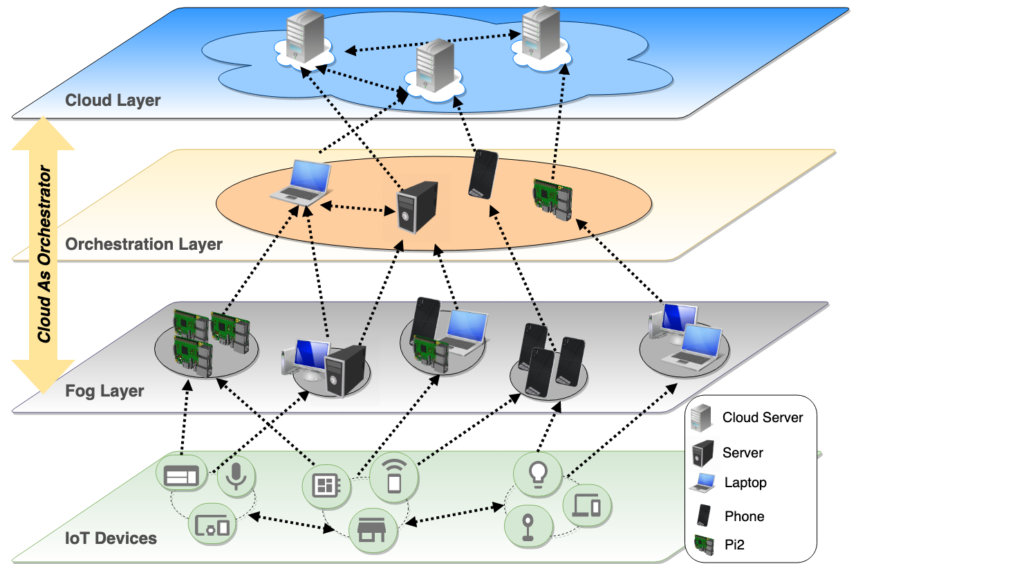Dynamic On-Demand Fog Formation Offering On-the-Fly IoT Service Deployment
- Post by: Hani Sami
- 18 February 2021
- Comments off
Abstract
With the increasing number of IoT devices, fog computing has emerged, providing processing resources at the edge for the tremendous amount of sensed data and IoT computation. The advantage of the fog gets eliminated if it is not present near IoT devices. Fogs nowadays are pre-configured in specific locations with pre-defined services, which limit their diverse availabilities and dynamic service update. In this paper, we address the aforementioned problem by benefiting from the containerization and micro-service technologies to build our on-demand fog framework with the help of the volunteering devices. Our approach overcomes the current limitations by providing available fog devices with the ability to have services deployed on the fly. Volunteering devices form a resource capacity for building the fog computing infrastructure. Moreover, our framework leverages intelligent container placement scheme that produces efficient volunteers’ selection and distribution of services. An Evolutionary Memetic Algorithm (MA) is elaborated to solve our multi-objective container placement optimization problem. Real life and simulated experiments demonstrate various improvements over existing approaches interpreted by the relevance and efficiency of (1) forming volunteering fog devices near users with maximum time availability and shortest distance, and (2) deploying services on the fly on selected fogs with improved QoS.
Authors’ Notes
To overview our approach and illustrate its contributions and advantages, we take three real life scenarios that require dynamic creation of a nearby fog: (1) An IoT device consuming significant energy while sending lots of data all the way to the cloud, (2) a user frequently requesting a particular service from the cloud and requiring better QoS, and (3) a crime taking place in an area where an image processing service need to be pushed on volunteering fog(s) to process the image and identify faces in the scene. In this context, our framework based on some criteria allows the cloud to decide on the need for fog serving near this device. We have three possible actions that the cloud can take. First, a Kubeadm cluster is already created in the area where we need a serving fog. In this case, the cloud forwards the pushing requests to master node of the ready orchestrator and let it deploy the service on the available volunteer. Second and third, in case a kubeadm cluster is not ready, two actions can take place based on the status (e.g., battery level), the behavior (e.g. number or type of requests) of the user sending the data, and the available volunteering resources in this area. The cloud can either decide to directly join a fog to its cluster and push images of services to it or to initialize an orchestrator first and then let it do the job of joining a fog to its new cluster. If it is either an orchestrator or a fog, the container placement algorithm running on the orchestrator outputs the near optimal distribution of services on a group of available volunteers based on the proximity and available resources. Many conflicting objectives are taken into consideration such as the number of services pushed to volunteers, quality of service, distance from volunteers to users, and time availability.

With the help of volunteering devices, containerization, orchestration, and micro-service technologies, we are able in this paper to overcome the aforementioned limitations and achieve the following contributions:
- Proposing a novel on-demand fog computing architecture embedding dynamic creation and management of volunteering devices and efficient on the fly deployment of IoT services.
- Providing generic and adaptable multi-objective optimization model to formulate container placement problem and adapt its evaluation to different contexts such as the available resources, priority of required services, proximity from IoT devices, and time availability.
- Offering efficient orchestration approach in a dynamic fog environment.
